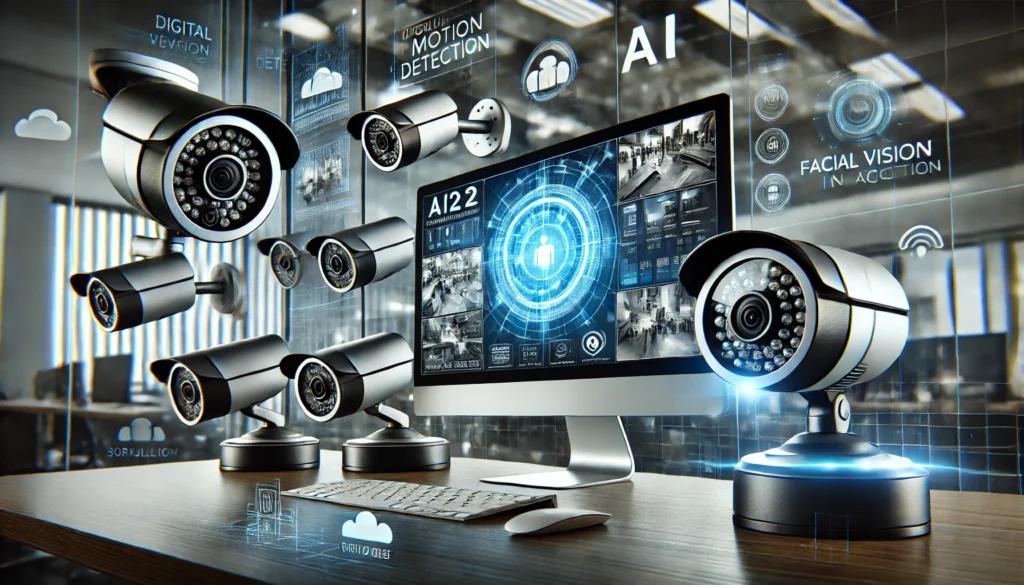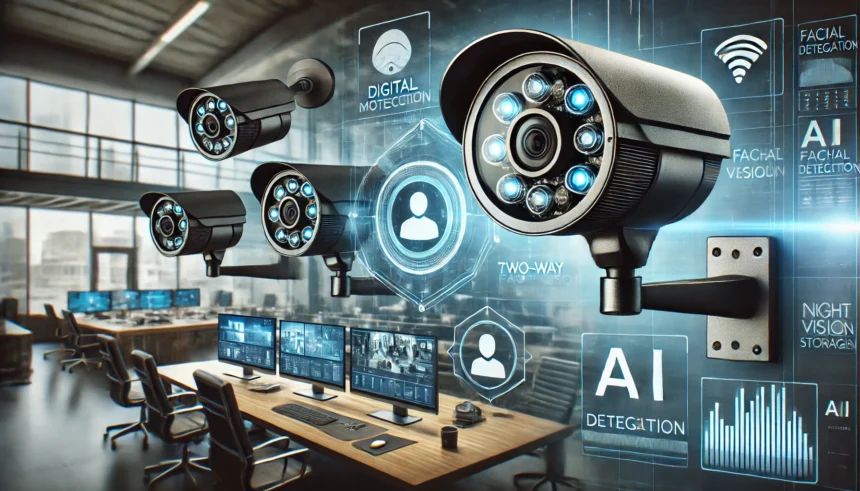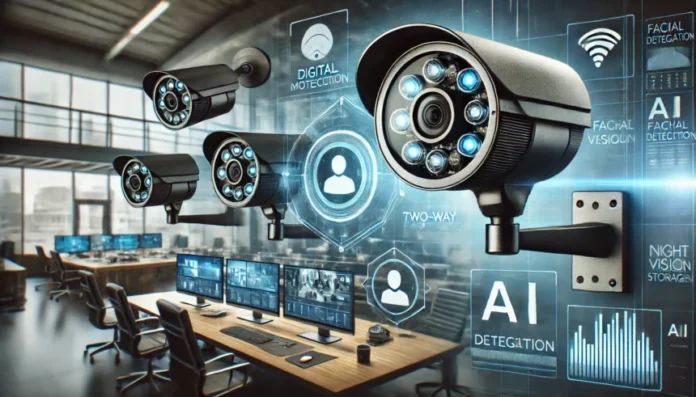Innovative cameras, known as Innocams, are reshaping the landscape of visual technology. It evolved from pinhole cameras to today’s digital devices. Each advance has expanded storytelling and science.
Innocams stand out as a monumental advancement, fusing AI-driven image processing, ultra-sensitive sensors, and adaptable designs to suit various settings and purposes. These cameras serve as beacons of innovation, enhancing cinematic quality with unmatched clarity. They also propel medical diagnostics with precise, high-resolution imaging.
As we explore the profound influence of Innocms, it becomes clear that they hold the potential to significantly alter the future of visual technology. They impact a wide array of fields with their transformative capabilities.
Innocams in the Film Production
In the dynamic world of film production, innovative cameras, also known as Innocams, are sparking a revolution in cinematography. These devices are redefining the art and science of storytelling on screen, far beyond mere image capture.
Features Enhancing Cinematography
Innoams are pivotal in advancing cinematographic capabilities with their state-of-the-art features.
- High Dynamic Range Imaging
Advanced imaging techniques help filmmakers capture scenes with varying light levels. They do this by preserving details in both shadows and highlights. This technology enhances the depth and realism of films. As a result, viewers get more lifelike stories.
- Low-Light Performance
Innocams possess remarkable low-light capabilities, reducing noise and maintaining quality. Filmmakers can now shoot under tough lighting conditions, broadening the scope of creative expression.
- Modular Design
Innoams feature a modular design, accommodating various lenses and accessories. This versatility allows filmmakers to explore different perspectives and styles.
- Advanced Stabilization Technologies
Innocams also boast advanced stabilization technologies, ensuring smooth and steady footage. This is essential for capturing dynamic action sequences and nuanced emotional moments. It provides filmmakers with the stability needed for precise execution of complex shots.
Innovative Cameras in Photography
In photography, the advent of innovative cameras is a seismic shift. They are often called Innocams. They change the way they capture and interpret images. These advanced devices are not merely tools but catalysts for redefining visual expression across both professional and amateur photography.
Features Revolutionizing Photography

The features embedded in Inocams are revolutionizing both professional and amateur photography.
- Advanced Autofocus Systems and Rapid Shooting Speeds
These cameras have advanced autofocus and quick shooting abilities. They capture every detail with precision. Photographers can now easily catch quick movements and events.
- Image Stabilization Technology
Innocams also feature new stabilization technology. This reduces blur in any situation. Photographers can now push the limits of creativity, resulting in clearer and smoother images and videos.
- AI-Powered Innovations
Additionally, AI enhancements in these cameras streamline complex tasks like scene recognition. This allows photographers to concentrate more on the art of photography. AI helps ensure every photo is taken with professional quality.
Impact on Research
Advanced imaging devices are revolutionizing not only creative industries like film and photography but also making significant strides in scientific research. These cameras, known as Innocms, are at the forefront of transforming how we observe and understand the world through scientific exploration.
Applications in Scientific Imaging
These devices enhance clarity and accuracy in scientific imaging across astronomy, microscopy, and medical fields. They’re used in astronomy, microscopy, and medicine, improving clarity and precision. They allow for detailed studies of space, tiny structures, and medical conditions.
- Astronomy
In astronomy, these cameras with special sensors detect faint signals from far-off cosmic bodies. This lets astronomers explore the universe’s secrets in more detail. It also enables them to uncover new insights into the universe’s mysteries.
- Microscopy
In microscopy, high-resolution imaging and precise capturing of cellular structures and processes are possible. Researchers can visualize microscopic details with enhanced clarity and accuracy, aiding discoveries across biological and materials sciences.
- Medical Imaging
Transformative advancements in medical imaging are also evident. Special sensors and imaging techniques let healthcare pros get detailed scans for diagnosis. The scans are more accurate and expose patients to less radiation. This improves patient care and facilitates earlier detection and more effective treatment planning.
Specialized Sensors and Imaging Techniques
Advanced cameras incorporate specialized sensors tailored to specific scientific needs. These sensors may include high-speed cameras. They capture fast biological processes. They may also use thermal imaging to analyze heat. Alternatively, they can use multispectral imaging in environmental research. This technology distinguishes various light wavelengths.
These cameras use advanced imaging techniques. These include fluorescence imaging and phase-contrast microscopy. These techniques expand the possibilities for scientific discovery across disciplines.
Impact of Technological Advancements
Innovative cameras reshape visual technology, connecting film production and scientific research with groundbreaking advancements. These devices capture details in movies and scientific experiments, revolutionizing our interaction with visual data.
Predictions for Future Advancements

Computational photography and machine learning are key in advancing these cameras. They now capture scenes in new ways, thanks to AI-driven processing. This not only boosts filmmaking but also aids scientific research with clearer insights.
The future looks bright for these cameras, with sensor technology and miniaturization improving. They are expected to become smaller and more powerful, capturing high-resolution images in extreme conditions or even space.
As computers grow more powerful, so will these cameras’ ability to analyze and interpret visual data instantly. This will open up new possibilities in various fields, from entertainment to healthcare.
Ethical and Privacy Considerations
Innovative cameras are transforming visual technology in film, science, and beyond. Yet, they raise ethical and privacy issues. In public, advanced surveillance cameras could infringe on privacy and freedoms. Thoughtful regulation is vital.
Data Security
The data these cameras collect presents security challenges. Strong cybersecurity measures are crucial to protect sensitive information from misuse. Strict privacy laws must balance innovation with data protection.
Regulatory Response
Regulations are adapting to these cameras’ ethical implications. New guidelines aim to protect rights while supporting tech progress. Transparency and accountability are key to leveraging these cameras responsibly.
Conclusion
Innovative cameras, or Innocms, have transformed visual tech, breaking barriers in film and science. They capture details and analyze them in real-time, revolutionizing industries and boosting creativity. Innocams enhance cinema storytelling and propel astronomy and medical research.
As they evolve with better sensors and AI, their impact deepens. Innocams are more than tools; they’re innovation catalysts, shaping discoveries and experiences in various fields. The future of visual tech will intertwine creativity and technology, with Inncams redefining visual narratives. Responsible use and ethical consideration are vital for their full potential.


